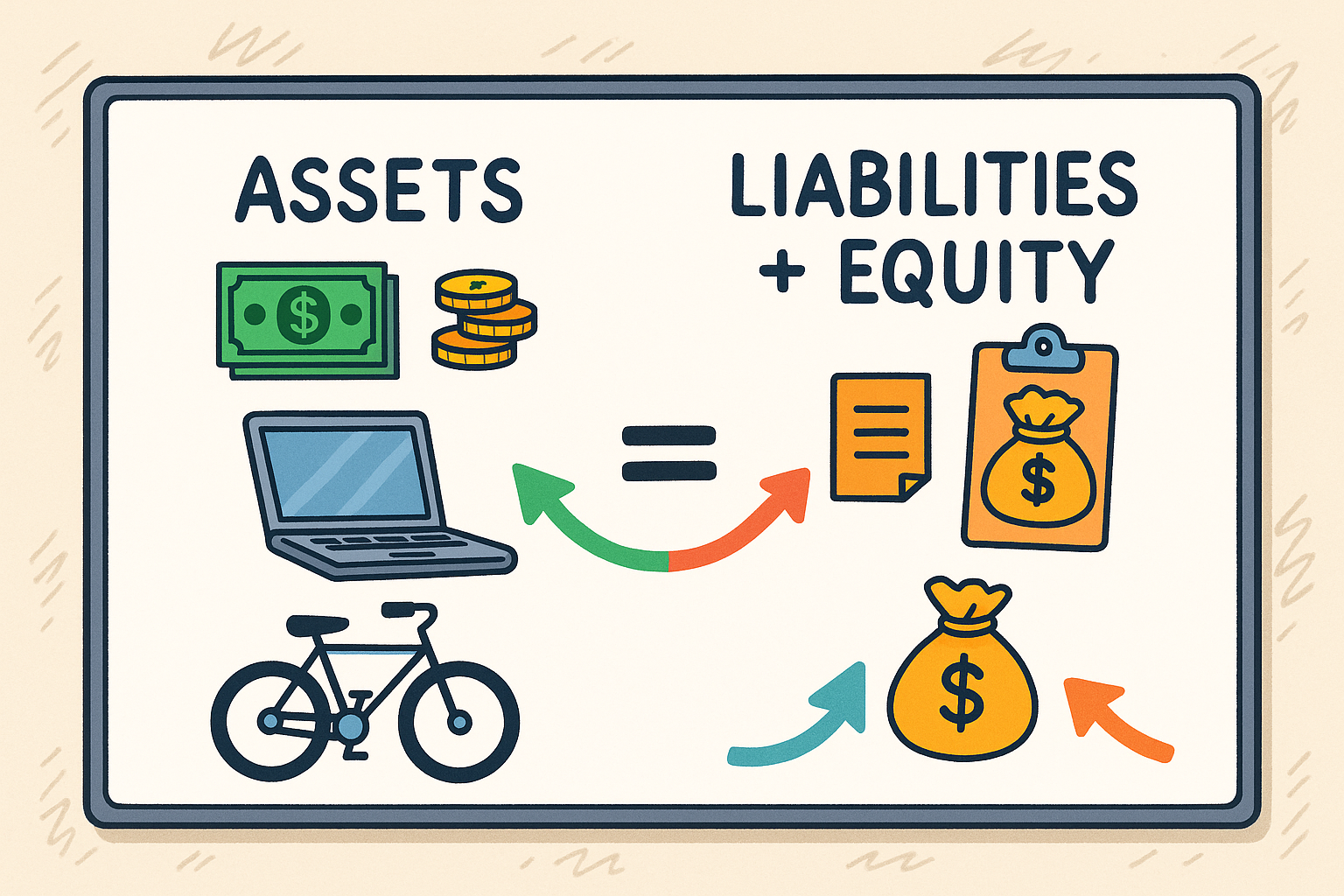💼 Balance Sheet Basics
If the income statement tells you how much you earned,
the balance sheet tells you what you own and owe at a specific moment.
Think of it like a snapshot of your business’s financial health.
⚖️ The Magic Equation
Assets = Liabilities + Equity
It looks simple, but this formula holds every company together.
- Assets – everything your business owns
(cash, computers, products, furniture) - Liabilities – everything your business owes
(loans, unpaid bills, taxes) - Equity – what’s left for the owners after debts are paid
It’s like saying:
“What I have” = “What I owe” + “What’s truly mine.”
🏠 Everyday Analogy
Imagine your own life as a mini-business.
You own:
- a phone worth $400
- a bike worth $300
- and have $100 cash
That’s $800 in assets.
You owe:
- $200 to a friend who lent you money
Then your equity (your real worth) is $600.
| Category | Example | Amount ($) |
|---|---|---|
| Assets | Phone, Bike, Cash | 800 |
| Liabilities | Loan from friend | 200 |
| Equity | Your net worth | 600 |
✅ It balances: 800 = 200 + 600.

The balance sheet equation — Assets on one side, Liabilities and Equity on the other — always in perfect balance.
🏢 Business Example
Let’s say a small bakery called Sweet Days Co. starts with this:
| Assets | Liabilities + Equity |
|---|---|
| Cash – $5 000 | Bank Loan – $2 000 |
| Equipment – $3 000 | Owner’s Equity – $6 000 |
| Inventory – $2 000 |
Total Assets = $10 000
Liabilities + Equity = $8 000 + $2 000 = $10 000 ✅ Balanced!
🧠 Why It Matters
A balance sheet shows:
- Can the business pay its bills?
- Does it own more than it owes?
- How much value belongs to its owners?
Investors and managers use it to judge whether a company is healthy or over-borrowed.
If assets shrink or debts grow too fast, it’s a red flag.
🧩 Quick Exercise
- Look around your house — list 5 things you own (assets).
- Add any money you owe (debts).
- Subtract debts from assets — that’s your personal equity.
- Now imagine running a lemonade stand and make the same table!
🌍 Real-World Insight
Even giant companies like Apple or Toyota rely on the same formula.
They just have bigger numbers — billions in assets and liabilities.
But at the end of the day, it’s still Assets = Liabilities + Equity.
Once you master this, you can read any company’s balance sheet — from your school club to the world’s largest corporations.
💬 Remember:
If the two sides don’t match, something’s missing — and the numbers will tell you exactly where to look.
📝 Try this today
List your own assets (things you own) and liabilities (things you owe).
Memorize the formula: Assets = Liabilities + Equity.
Create a mini balance sheet for a small fictional business (3 items per column).
Lesson Progress
Module: accounting · +0% upon completion